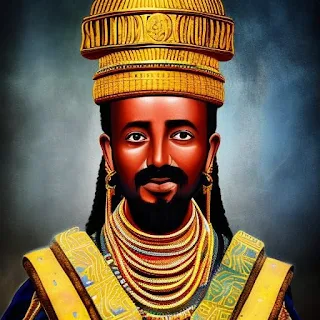Ethiopian Castles and Emperors
In the annals of history, King Fasil, or Fasiledes as he is known, decreed Gondar as the enduring capital of Ethiopia in the year 1636. Under the successive reigns of noble monarchs, a remarkable transformation unfolded. What was once a humble encampment evolved into a walled-in fortified compound of great import, christened Fasil Ghebbi. This compound encompassed six grand edifice complexes, nearly twenty regal palaces and esteemed structures, and an impressive tally of some thirty venerable churches.
 |
| Francesco Bandarin Photo of Castles of Gondor |
The castles of Gondar, also known as the Gondar Castle Complex or the Royal Enclosure, are a collection of historical buildings located in Gondar, a city in northern Ethiopia.
The Gondar Castle Complex was the Ethiopian Empire's royal residence and administrative center during the 17th and 18th centuries. The complex consists of several castles, palaces, churches, and other structures, each reflecting different architectural styles. Notable structures include Fasil Ghebbi, which is the main palace compound, and Debre Birhan Selassie Church, known for its iconic murals.
The architecture blends indigenous Ethiopian, Arabian, and European influences. Fasilides' Palace, in particular, showcases impressive towers, balconies, and decorative elements. The Debre Birhan Selassie Church is famous for its stunning frescoes and artwork depicting biblical scenes and angels on the ceiling. The church's walls are adorned with religious paintings, making it a significant cultural and religious site.
The Bath of Fasilides is a well-preserved pool and bathing area with great historical and cultural importance. It is part of the Gondar Castle Complex, which served as the royal residence and administrative center during the reign of King Fasilides and his successors in the 17th century.
The Bath of Fasilides plays a central role in celebrating the Timket festival, commemorating Jesus's baptism in the Jordan River. During this festival, the pool is filled with blessed water, and thousands of pilgrims and celebrants gather to immerse themselves in the holy water as a symbolic act of purification and renewal.
Emperors Who Lived lived in the Castles of Gondar.
The castles of Gondar, collectively known as the Gondar Castle Complex or the Royal Enclosure, served as the Ethiopian Empire's royal residence and administrative center during the 17th and 18th centuries. These castles were the seat of power for emperors, and their courts lived within the complex.
Emperor Fasilides, who reigned 1632-1667, was the first emperor associated with the establishment of Gondar as the capital of Ethiopia. He played a significant role in constructing many of the structures within the Gondar Castle Complex.
Emperor Yohannes I, reigned 1667-1682, succeeded Fasilides as emperor and continued to reside in Gondar. He made further contributions to the development of the complex.
Emperor Iyasu I, who reigned 1682-1706, was another emperor who lived in the Gondar castles. He expanded and enhanced the architectural elements of the complex.
Emperor Dawit III, who reigned from 1716-1721, also resided in the Gondar Castle Complex during his brief reign.
Emperor Bakaffa, who reigned 1721-1730, was one of the emperors who lived in the complex. He is known for his patronage of the arts and culture.
Emperor Iyasu II reigned from 1730-1755, and continued the tradition of residing in the Gondar castles. He is also known for his efforts to strengthen the Ethiopian Orthodox Church.
For Ethiopian emperors, such as those who resided in the Gondar Castle Complex, the historical records and inscriptions generally provide information about their reigns, achievements, and contributions to the empire.





